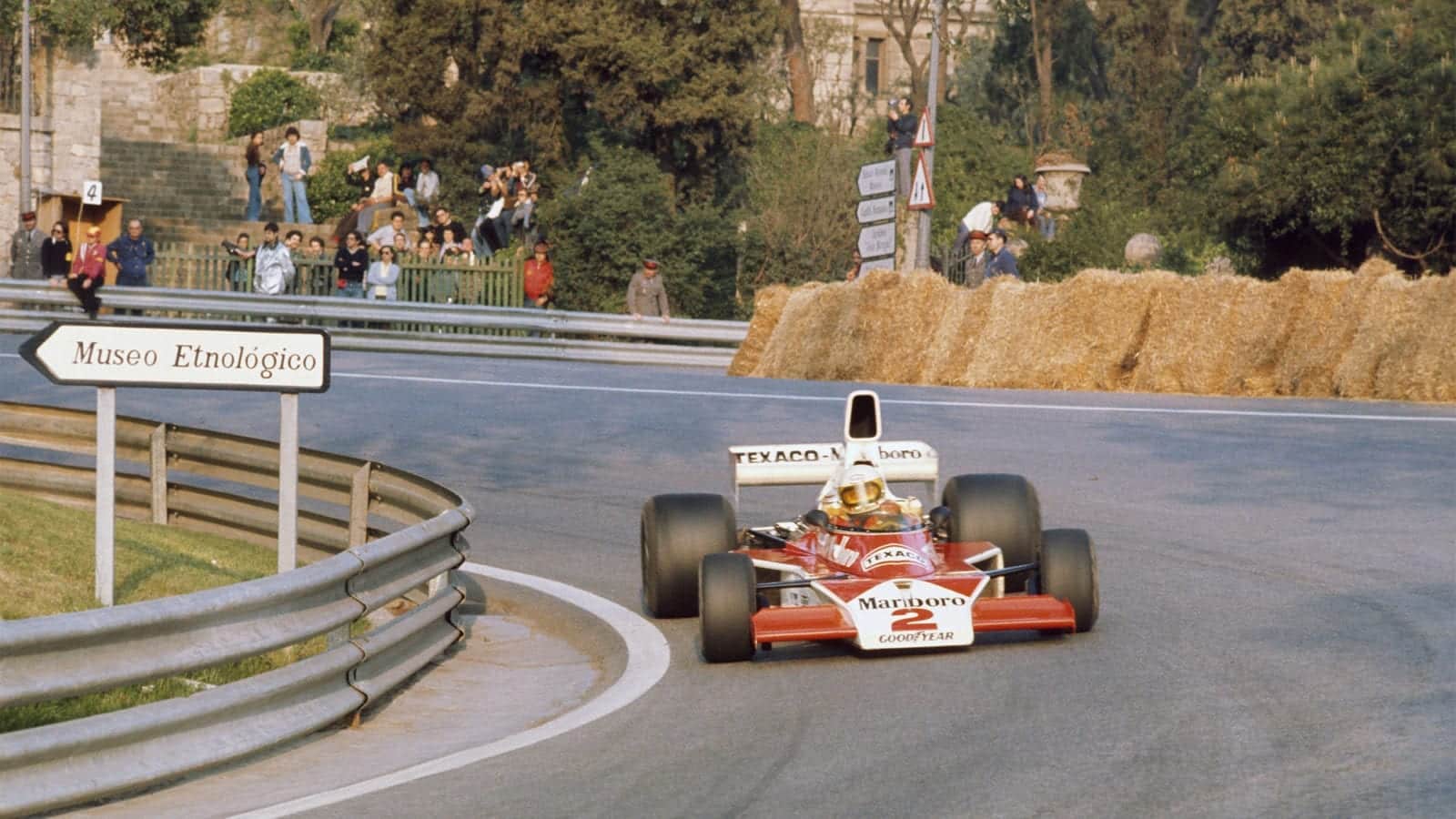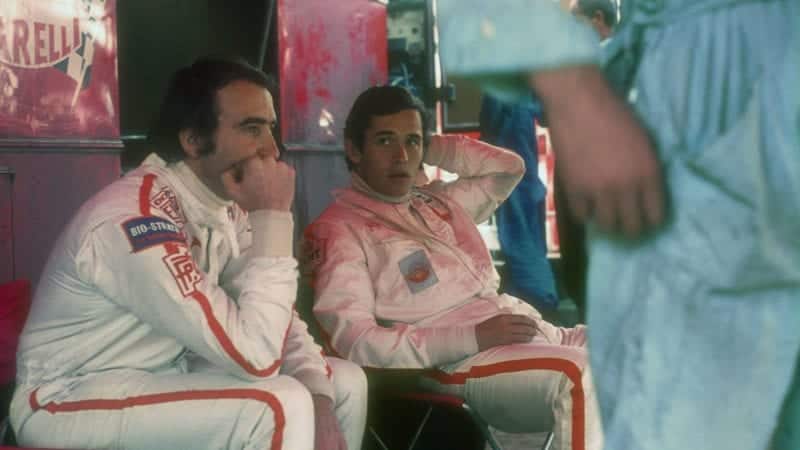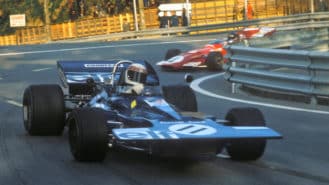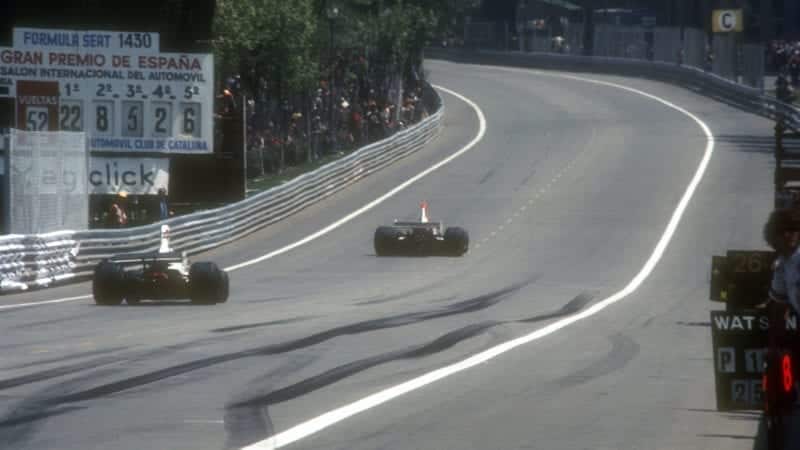That first day, only Ickx and Vittorio Brambilla took to the track, and their colleagues, most notably Emerson Fittipaldi, Jody Scheckter and Niki Lauda, were in a particularly militant mood. Graham Hill, by then semi-retired, acted as a calming influence.
“In reality,” Hill explained, “this should be a confrontation between the organisers and the CSI who must ensure that the circuit is up to standard. But we, the drivers, have got involved because the CSI people here don’t seem interested — in fact, the problem is finding them…”
James Hunt was typically crisp on the subject: “They’re more worried about spilling gin on their f****** blazers than stopping cars getting into the crowd.” And Mario Andretti pointed out that, under Spanish law, a driver was liable for any injury his car might cause to the spectators.
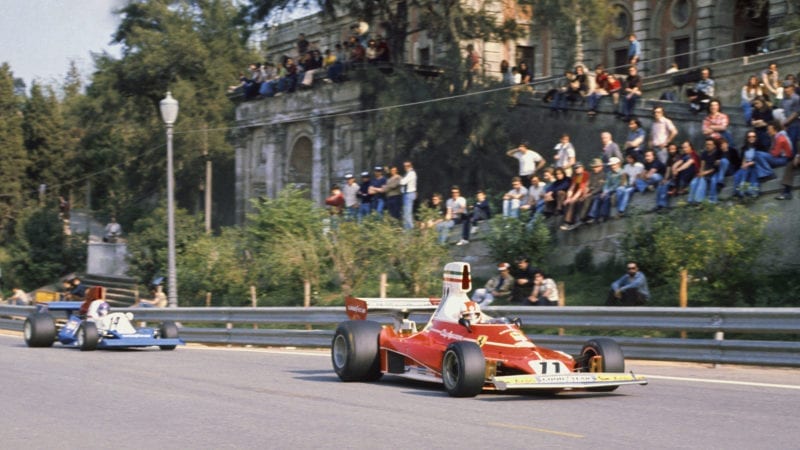
Regazzoni leads Bob Evan’s BRM
Grand Prix Photo
The CSI men thought things through — and opted to scarper. “What is a safe circuit, anyway?” said one of their number, Claude Le Guezec. “I have never seen a safe circuit…” So that was helpful.
By midday on Saturday the team owners had proposed putting their mechanics to work on the barriers, and for two hours the boys toiled away. Later the organisers threatened legal action, should the entrants ‘fail to honour their contractual agreements’, in which case all the teams’ equipment would be impounded. Given that the paddock was a derelict sports stadium, the locking of two access gates would have done the job.
Formula One had a gun at its head and now the constructors became nervous, prevailing upon their drivers at least to run the three laps then required to qualify, so as to fulfil that part of the contract. “You don’t have to go fast,” they said, but of course the drivers, once strapped in, fell prey to their instincts — save Fittipaldi, who cruised his three laps, then left the circuit for good.
